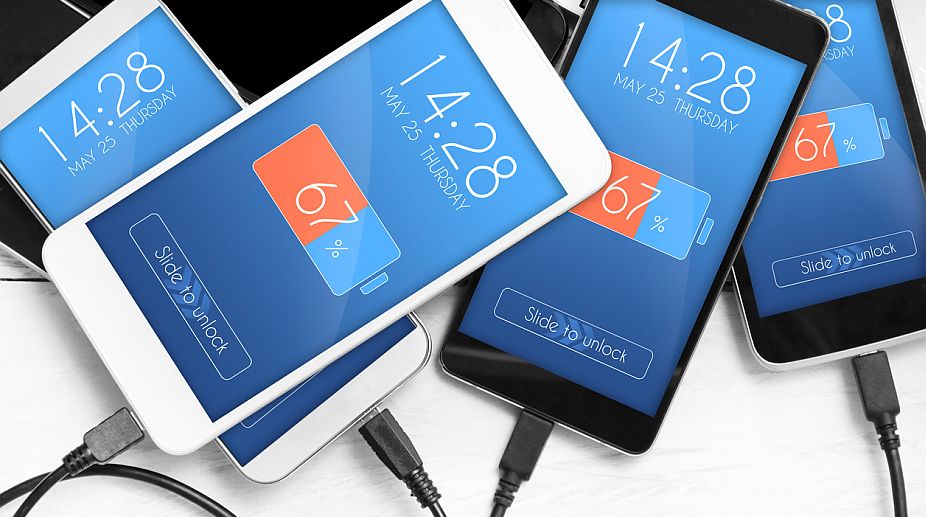Samsung, employees agree to 5.1 pc pay raise for 2024
Samsung’s management and its workers agreed to an average 5.1 per cent pay raise for the year, sources said on Friday.

(Photo: Getty Images)
Scientists, including one of Indian origin, have developed a new electrode design that may allow smartphone batteries to be charged within seconds.
Researchers in Drexel University in the US used highly conductive, two-dimensional material called MXene to design the electrodes.
The design could make energy storage devices like batteries just as fast as the speedy supercapacitors that are used to provide energy in a pinch – often as a battery back-up or to provide quick bursts of energy for things like camera flashes.
Advertisement
“This paper refutes the widely accepted dogma that chemical charge storage, used in batteries and pseudocapacitors, is always much slower than physical storage used in electrical double-layer capacitors, also known as supercapacitors,” said Yury Gogotsi, professor in Drexel's College of Engineering, who led the study.
“We demonstrate charging of thin MXene electrodes in tens of milliseconds. This is enabled by very high electronic conductivity of MXene,” said Gogotsi.
“This paves the way to development of ultrafast energy storage devices than can be charged and discharged within seconds, but store much more energy than conventional supercapacitors,” he said.
Electrodes are essential components of batteries, through which energy is stored during charging and from which it is disbursed to power our devices.
The ideal design for these components would be one that allows them to be quickly charged and store more energy. To store more energy, the materials should have places to put it.
Electrode materials in batteries offer ports for charge to be stored. In electrochemistry, these ports, called “redox active sites” are the places that hold an electrical charge when each ion is delivered.
If the electrode material has more ports, it can store more energy – which equates to a battery with more “juice.”
Researchers produced a hydrogel electrode design with more redox active sites, which allows it to store as much charge for its volume as a battery.
This measure of capacity, termed “volumetric performance,” is an important metric for judging the utility of any energy storage device.
To make those plentiful hydrogel electrode ports even more attractive to ion traffic, researchers including graduate student Sankalp Kota from Drexel designed electrode architectures with open macroporosity – many small openings – to make each redox active sites in the MXene material readily accessible to ions.
“In traditional batteries and supercapacitors, ions have a tortuous path toward charge storage ports, which not only slows down everything, but it also creates a situation where very few ions actually reach their destination at fast charging rates,” said Maria Lukatskaya, first author of the study published in the journal Nature Energy.
“The ideal electrode architecture would be something like ions moving to the ports via multi-lane, high-speed 'highways,' instead of taking single-lane roads,” said Lukatskaya.
“Our macroporous electrode design achieves this goal, which allows for rapid charging – on the order of a few seconds or less,” she said.
Advertisement